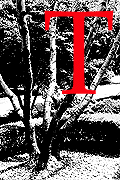 homas Burnet's emphasis on external natureand the pleasantly awed reaction it produces in the observer prepared the way for the reception of Longinus's third-century fragmentary treatise on the rhetorical sublime. Although there were at least five editions or translations of Longinus during the seventeenth century, critics appear to have paid little attention to the work until Burnet's writings demanded a new vocabulary which Longinus was able to provide. When Boileau translated Longinus's Peri Hupsous in 1674, he made available a critical terminology which could be applied to the new interest in external nature which was soon to come into prominence. But although the grand or high style of rhetoric had from its origin the purpose of arousing emotion, critics had to effect a transference of terms from the Longinian rhetorical sublime to the aesthetic natural sublime of the theorists. As Samuel Holt Monk has pointed out: "To write on the sublime style is to write on rhetoric; to write on sublimity is to write on aesthetic. The sublime style is a means to an end; sublimity is an end in itself" [The Sublime, 12]. Although the terminology of the sublime was rapidly translated from rhetoric to aesthetics, many influential writers on sublimity, including Addison and Shaftesbury, did not employ the word "sublime," and instead used such partial synonyms as "the great," "the unlimited," "the majestic," and "the stupendous."
homas Burnet's emphasis on external natureand the pleasantly awed reaction it produces in the observer prepared the way for the reception of Longinus's third-century fragmentary treatise on the rhetorical sublime. Although there were at least five editions or translations of Longinus during the seventeenth century, critics appear to have paid little attention to the work until Burnet's writings demanded a new vocabulary which Longinus was able to provide. When Boileau translated Longinus's Peri Hupsous in 1674, he made available a critical terminology which could be applied to the new interest in external nature which was soon to come into prominence. But although the grand or high style of rhetoric had from its origin the purpose of arousing emotion, critics had to effect a transference of terms from the Longinian rhetorical sublime to the aesthetic natural sublime of the theorists. As Samuel Holt Monk has pointed out: "To write on the sublime style is to write on rhetoric; to write on sublimity is to write on aesthetic. The sublime style is a means to an end; sublimity is an end in itself" [The Sublime, 12]. Although the terminology of the sublime was rapidly translated from rhetoric to aesthetics, many influential writers on sublimity, including Addison and Shaftesbury, did not employ the word "sublime," and instead used such partial synonyms as "the great," "the unlimited," "the majestic," and "the stupendous."
To John Dennis, Pope's Sir Tremendous Longinus, must go the credit of initiating a sophisticated introduction of Longinian terminology into an aesthetic of the sublime. Dennis's The Grounds of Criticism in Poetry (1704) continued trends which Burnet had begun, but also added new important emphases. He continued the separation of the beautiful and the sublime, and he also maintained the association of the sublime with religious awe. Dennis's most important contribution to the theory of the sublime was that he was the first critic to pay much attention to the effect the sublime object had upon the beholder [The Sublime, 45]. According to Nicolson, Dennis's originality lay in the fact that he based his conceptions of sublimity "not upon rhetorical theories but upon his own experience and upon attitudes native to the English, almost unknown to the French" [Mountain Gloom, 281]. Perhaps most important, Dennis was also the first writer to introduce terror into considerations of the sublime.
Last modified 30 November 2002.
Thanks to Stephen Miller for calling attention to new dating of Longinus.